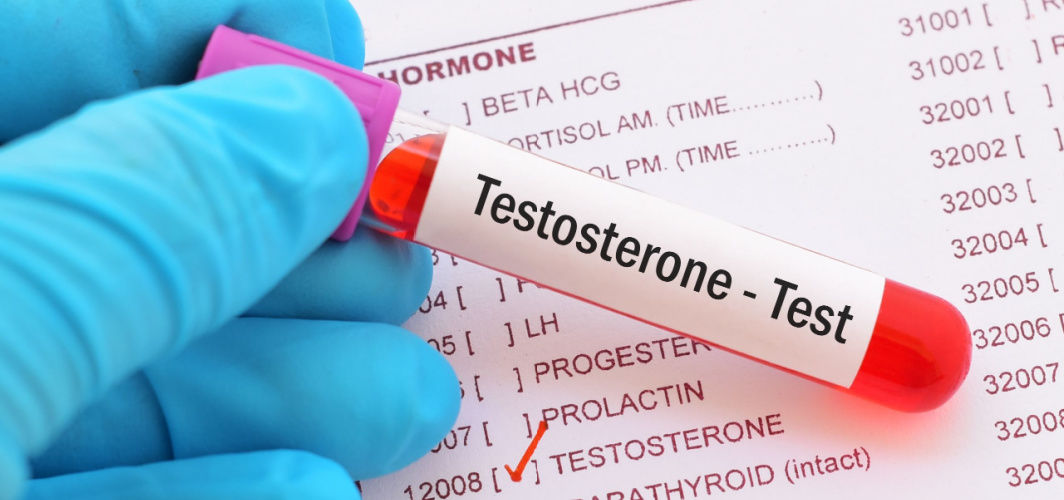General Health
Typhoid Fever: Cause, Symptoms, Diagnosis, Treatment & Prevention
7 min read
By Apollo Pharmacy, Published on - 05 October 2023
Share this article
0
0 like

Typhoid fever is a serious infectious disease that affects millions of people worldwide, with India being one of the most affected countries. A recent study highlights India reported 14.5 million cases annually. The prevalence of typhoid is particularly alarming in areas with poor sanitation and inadequate access to clean drinking water. It is crucial to be aware of the symptoms of typhoid in order to seek timely medical intervention and prevent complications. If left untreated, typhoid fever can lead to severe complications, including intestinal perforation, haemorrhage, and organ damage.
What is Typhoid Fever?
Typhoid fever is a serious bacterial infection caused by the bacteria Salmonella typhi. It is primarily transmitted through contaminated food and water, as well as direct contact with infected individuals. After exposure, the average incubation period for typhoid fever is around 8-14 days before symptoms manifest.
Once the bacteria enter the body, they multiply in the intestines and then spread into the bloodstream. From there, they can infect various organs, such as:
- Liver
- Spleen
- Lymph nodes
Common Symptoms of Typhoid Fever
The symptoms of typhoid fever can vary, and in some cases, individuals may not show any symptoms at all. Here are common symptoms associated with typhoid fever:
1. Early-stage Symptoms (Days 1-7)
The early-stage symptoms are not specific to typhoid fever and can be easily confused with other conditions, which include the following:
- Gradual onset of symptoms
- Mild to moderate fever
- Headache and general malaise
- Weakness and fatigue
- Loss of appetite and weight loss
2. Progression to Advanced-stage Symptoms (Days 8-14)
As the days progress and typhoid fever enters its advanced stage, the symptoms become more pronounced and severe. Here are some common symptoms that may manifest:
- High fever persisting above 103°F (39°C)
- Abdominal pain and tenderness
- Diarrhoea or constipation
- Rose spots on the abdomen, chest and back
- Enlarged spleen and liver (hepatosplenomegaly)
- Delirium or confusion in severe cases
3. Complications Associated with Typhoid Fever
If left untreated, typhoid fever can lead to serious complications. Here are some potential complications associated with the disease:
- Intestinal Perforation: In rare cases, the walls of the intestines may develop a hole or perforation, leading to severe abdominal pain, vomiting and peritonitis (inflammation of the abdominal cavity). This is a life-threatening condition that requires immediate medical attention.
- Gastrointestinal Bleeding: Typhoid fever can cause inflammation and ulceration in the digestive tract, leading to gastrointestinal bleeding. Symptoms include blood in the stools or vomit. Prompt medical intervention is necessary to manage this complication.
- Hepatic Involvement: The liver can be affected during typhoid fever, resulting in hepatitis (inflammation of the liver), jaundice (yellowing of the skin and eyes) and liver dysfunction. Monitoring liver function is important in managing the disease.
How is Typhoid Fever Diagnosed?
By combining clinical assessment with laboratory tests, healthcare professionals can accurately diagnose typhoid fever and initiate appropriate treatment promptly. It is important to seek medical attention if you experience symptoms suggestive of typhoid fever, especially if you have recently travelled to high-risk areas or have been in close contact with someone diagnosed with the disease.
1. Clinical Assessment
During a clinical assessment, the healthcare professional will evaluate the patient's medical history and conduct a physical examination. They will look for symptoms such as:
- High fever
- Abdominal pain
- Headache
- A characteristic rash known as 'rose spots'
The presence of these symptoms, along with a recent history of travel to an area where typhoid is endemic or close contact with an infected individual, can provide important clues for diagnosis.
2. Laboratory Tests
Laboratory tests play a crucial role in confirming the diagnosis of typhoid fever. The two most commonly used tests are listed below:
- Blood Culture: It involves collecting a blood sample from the patient and culturing it to detect the presence of S. typhi bacteria. This test is considered the gold standard for diagnosing typhoid fever.
- Serological Tests: They detect specific antibodies against the S. typhi bacteria. These tests are useful in cases where blood culture results are negative or when there is difficulty obtaining a blood culture. However, they are not as reliable as blood cultures in the early stages of the disease.
Treatment and Management of Typhoid Fever
Once diagnosed with typhoid fever, it is crucial to initiate treatment promptly to prevent complications. Here are some important aspects of the treatment and management of typhoid fever:
1. Importance of Early Intervention
Understanding the symptoms of typhoid fever is essential to seek medical care early. Delaying treatment can lead to severe complications, such as intestinal perforation or bloodstream infection.
2. Hospitalisation and Supportive Care
Severe cases of typhoid fever may require hospitalisation for close monitoring and treatment. Hospitalisation allows healthcare professionals to administer intravenous fluids and medications more effectively.
Adequate rest and supportive care help in managing symptoms and preventing complications.
3. Antibiotic Therapy
Antibiotic therapy is a key component in the treatment of typhoid fever
- Typhoid fever is treated with antibiotics to kill the Salmonella bacteria causing the infection.
- Your healthcare provider will prescribe antibiotics based on the local antibiotic susceptibility patterns.
- Commonly used antibiotics include fluoroquinolones, third-generation cephalosporins and azithromycin.
- The duration of antibiotic therapy typically ranges from 2 to 14 days.
4. Fluid and Electrolyte Replacement
The high fever and diarrhoea associated with typhoid fever can cause dehydration. Replenishing fluids and electrolytes through oral rehydration solutions or intravenous fluids is vital.
Adequate hydration helps maintain blood pressure, prevent organ damage and improve overall recovery.
5. Diet Recommendations
A nutritious diet plays a crucial role in supporting recovery from typhoid fever. Follow the Typhoid Diet chart to help ease discomfort.
- Focus on consuming well-cooked foods, including fruits, vegetables, lean proteins and whole grains.
- Avoid raw or undercooked foods, unpasteurised dairy products and street food to prevent reinfection.
- In some cases, a healthcare professional may recommend vitamin and mineral supplements.
Preventive Measures Against Typhoid Fever
Preventive measures against typhoid fever are crucial, especially in regions where the disease is endemic or during travel to areas with poor sanitation and hygiene.
1. Vaccination
Vaccination is an effective way to protect yourself against typhoid fever. There are two types of vaccines available:
- Injectable vaccine
- Oral vaccine
Both offer significant protection, but it is important to consult with a healthcare professional to determine which option is best for you.
2. Safe Food and Water
Contaminated food and water are common sources of typhoid transmission. By following these safe practices, you can reduce the risk of consuming contaminated substances:
- Properly cook food, especially meat and eggs, to kill any potential bacteria.
- Drink only boiled or purified water to ensure its safety.
- Avoid street food and unhygienic eating establishments, as they may not follow proper food handling practices.
3. Personal Hygiene
In addition to safe food and water practices, personal care plays a crucial role in preventing typhoid transmission. Here are some habits you should adopt:
- Regularly wash your hands with soap and water for at least 20 seconds or use a hand sanitiser when soap is not available.
- Maintain cleanliness in the kitchen and bathroom areas by regularly cleaning surfaces, utensils, and bathroom fixtures.
Conclusion
It is important to note that these symptoms can vary from person to person, and some individuals may exhibit mild or atypical symptoms. By taking preventive measures such as vaccination, practising safe food and water habits and maintaining personal hygiene, you can significantly reduce the risk of contracting typhoid fever. Being aware of the symptoms of typhoid fever can help in early detection and prompt treatment. If you experience any of the aforementioned symptoms, do not hesitate to seek medical attention. Remember, only a healthcare professional can provide personalised advice and address any concerns you may have.
Contaminated food and water are the major causes of typhoid fever. Protect your stomach from such infections, with the help of
FAQs
Q. How is typhoid fever different from other types of fever?
Unlike common viral fevers, typhoid fever is caused by a bacteria called S. typhi. It is transmitted through contaminated food and water, making it more common in areas with poor sanitation.
Q. Are there any warning signs before the onset of typhoid fever?
Some individuals may experience warning signs such as a gradual increase in temperature, a mild cough, sore throat or an enlarged spleen before developing full-blown symptoms.
Q. Can typhoid fever cause skin rashes?
In some cases, particularly in children, a rose-coloured rash known as 'rose spots' may appear on the chest or abdomen.
Q. How long does it take for symptoms to appear after being exposed to the bacteria?
The incubation period for typhoid fever is usually 8 to 14 days.
Q. Can the symptoms of typhoid fever be mistaken for other illnesses?
Yes, the early symptoms of typhoid fever can resemble those of other common illnesses like malaria or dengue fever. A thorough medical evaluation is necessary for an accurate diagnosis.
General Health
Consult Top Cough and Fever
View AllLeave Comment
Recommended for you

General Health
Vitamin B12 Test: Uses, Normal Range, Deficiency
A vitamin B12 blood test helps diagnose the deficiency of the nutrient, monitor treatment effectiveness to get the right level of the nutrient and prevent complications. Learn about the procedure, interpretation of results, and when to consider testing vitamin B12 levels for optimal health.

General Health
A Complete Guide To Constipation: Causes, Home Remedies, and Red Flags
Constipation is a common digestive issue affecting millions worldwide. If not treated in time, it can affect regular routines and quality of life. Read on to know the common causes, home remedies, red flags and more.

General Health
How To Check Testosterone Levels?
Monitoring testosterone levels is essential for maintaining optimal health. Understanding the significance of testosterone, the testing methods available, recognising signs of low levels, and knowing when to get tested is key to addressing any hormonal imbalances effectively.
Subscribe
Sign up for our free Health Library Daily Newsletter
Get doctor-approved health tips, news, and more.
Visual Stories

The Best Exercises for Controlling Blood Sugar Levels
Tap to continue exploring
Recommended for you

General Health
Vitamin B12 Test: Uses, Normal Range, Deficiency
A vitamin B12 blood test helps diagnose the deficiency of the nutrient, monitor treatment effectiveness to get the right level of the nutrient and prevent complications. Learn about the procedure, interpretation of results, and when to consider testing vitamin B12 levels for optimal health.

General Health
A Complete Guide To Constipation: Causes, Home Remedies, and Red Flags
Constipation is a common digestive issue affecting millions worldwide. If not treated in time, it can affect regular routines and quality of life. Read on to know the common causes, home remedies, red flags and more.

General Health
How To Check Testosterone Levels?
Monitoring testosterone levels is essential for maintaining optimal health. Understanding the significance of testosterone, the testing methods available, recognising signs of low levels, and knowing when to get tested is key to addressing any hormonal imbalances effectively.



